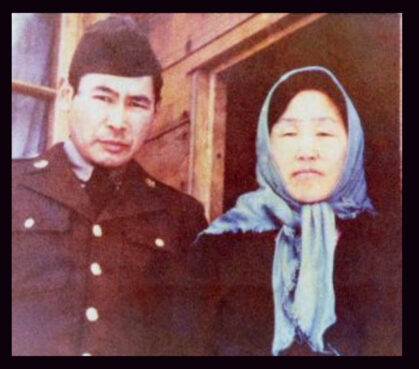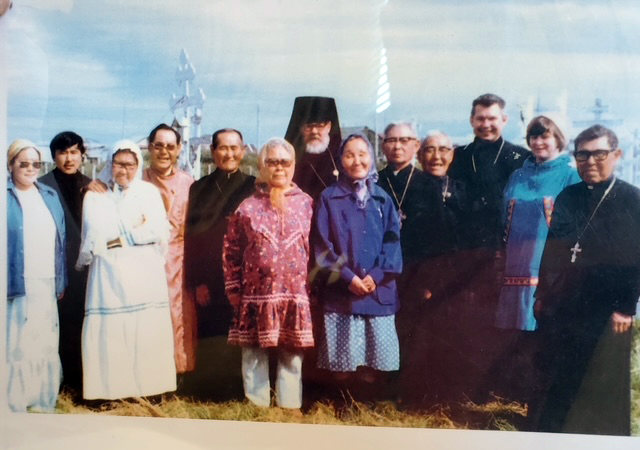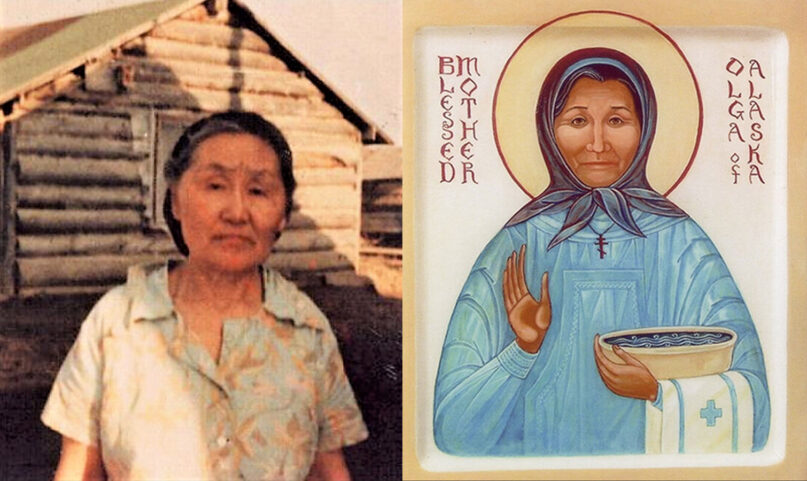(RNS) — A Native Alaskan midwife known for her healing love, especially toward abused women, has become the first female Orthodox Christian saint from North America after she was glorified at a meeting of bishops of the Orthodox Church in America in Chicago this week.
Expected for more than a year, her glorification is the result of a bottom-up process that begins with lay members’ veneration and the gathering of accounts of holiness by a church committee. Unlike Catholicism, the Orthodox do not require miracles to confirm a saint, but some women have credited Olga with miraculous intercessions.
On Nov. 2, Bishop Alexei of Sitka and Alaska wrote a letter to the OCA’s highest-ranking cleric, Metropolitan Tikhon, formally requesting that she be considered for sainthood.
“The first peoples of Alaska are convinced of her sanctity and the great efficacy of her prayers,” he wrote.
The synod then agreed in a Nov. 8 statement that “the time for the glorification of Matushka Olga has arrived, fulfilling the hopes and prayers of pious Orthodox Christians throughout Alaska and the entire world,” using an honorific for priests’ wives in the Russian Orthodox Church.
“The Holy Synod determined that the time for Matushka’s glorification is now simply based upon its prayerful reflection and the growing witness to her holiness expressed through the voice of the Faithful,” Archbishop Daniel of Chicago and the Midwest, who serves on the synod, told RNS in an email. “In other words, through the guidance of the Holy Spirit.”

Nikolai and Olga Michael in an undated photo. (Image courtesy of Orthodox Canada)
Olga, named Arrsamquq when she was born into the Yupik tribe in 1916, knitted mittens and sewed leather and fur boots for her rural Alaskan community and often gave away her family’s few possessions to help others in need. She assisted pregnant women through childbirth and shared their joy and grief.
After an arranged marriage to a local hunter and fisherman who founded the village’s first general store and post office before becoming a priest later in life, she gave birth to 13 babies of her own, only eight of whom survived to adulthood.
Church accounts credit Olga’s prayers for her husband’s embrace of the church but do not say whether Olga suffered abuse herself. She died in 1979.
Above all, Olga is remembered for spiritually healing abused women, inviting them into the intimate space of a traditional wooden Yupik sauna, where neither bruises nor emotions could hide, and conversation flowed freely.
Olga will officially become the 14th North American Orthodox Christian saint, and the only woman in that group, in a ceremony yet to be scheduled. Her ancestors reportedly converted to Orthodoxy after hearing the teachings of the Aleut missionary Iakov Netsvetov (1802-1864), now known as St. Jacob. St. Herman, a Russian Orthodox monk and missionary to Alaska in the late 1700s and early 1800s, when it was part of Russia, was the first North American to be canonized by the church.
The Rev. Vasily Fisher, parish priest of St. Nicholas Orthodox Church in Kwethluk, Alaska, where St. Olga lived, said her glorification means “a great deal” to the Yupik community there.
“People are suffering from substance abuse, families are in need,” Fisher said. “Her preparation towards glorification in the church gives hope to a path of sobriety and renewed dignity as a Native people who were first helped by St. Herman. That love, that only comes from God, is reflected by these local saints who reach out to those who hunger and thirst to see Christ.”
Jacqueline Stephens, an Orthodox Christian in Georgia, said she was “overjoyed” about St. Olga’s glorification. She credits Olga with helping her find a job and asks for her help toward a career helping women.
“I don’t think people understand the impact of (sexual abuse) on the soul, how that can open the door to other degradation, whether from the self or others, so many can feel like they have no purity to preserve, which is a lie,” Stephens said. “Sexual assault is a wound to the soul, not just the body, not just the mind, but the soul can be healed, can be restored. Her service and her miracles are a testament to that.”
One popular icon depicting Olga shows her holding a scroll that reads, “God can create great beauty from complete desolation.” The attribution comes from an anonymous woman from Ossining, New York, who said the saint visited her in a dream in the 1990s and healed her from years of trauma from childhood sexual abuse.

Olga Michael, center right, with husband, Nikolai, to her right, with elders in an undated photo. (Photo courtesy Orthodox Church in America)
The woman, who later converted to Orthodoxy, hadn’t heard of Olga, but her therapist recognized her description from “Orthodox Alaska,” a book she had read by the Rev. Michael Oleksa, an OCA priest and historian of Orthodox Native Alaskans who knew Olga.
“I’ve always thought if there is anyone I’ve known in my lifetime who would be glorified a saint, it would be Matushka Olga,” Oleksa said.
Icons and murals of Olga’s wrinkled face wrapped in a head scarf have increasingly appeared in churches across the United States, adding to her case for sainthood and indicating that bishops believed her glorification was imminent. In Belarus, in Eastern Europe, a women’s monastery has painted and sold icons of Olga for years. In the remote region around Kodiak, Alaska, Native Alaskans have never stopped venerating her.
“For us, it’s very significant. We’ve been waiting for this,” said Deborah Yohannah Peterson, who often serves in her Greek Orthodox church’s bookstore in Anchorage. “A lot of people have an interest in her. We try to keep small icons of her.”
She heard the news of Olga’s glorification while sitting in an airport. “I just started crying,” Peterson said. “I don’t have a lot of personal experience with her, but I think that must be changing.”
Cynthia Sindall, who helped start a knitting guild named for Olga at Holy Cross Orthodox Church in Linthicum, Maryland, said the announcement also brought tears to her eyes.
“This news will make many people very happy and will be a blessing to all,” she said.
Sindall said she feels “very close” to Olga when she venerates her icon, as if she were a friend or relative. The knitting guild has provided mittens, hats, socks and other warm items to the homeless as well as prayer shawls and chemo caps in her name. “I hope that I can be helpful to others in need according to her example of humility, generosity and caring.”
Olga’s remains, which lie in her village church cemetery, will now be exhumed as holy relics. Her life story will be included in church calendars, and a rite of glorification with a special hymn in her honor will be performed at a yet-to-be-announced date and location.
According to church accounts, the icy ground in Kwethluk miraculously thawed to allow her burial there on Nov. 10, 1979, and a flock of summer birds appeared during the funeral procession. The day is now pronounced her annual feast day on the new Orthodox calendar.





